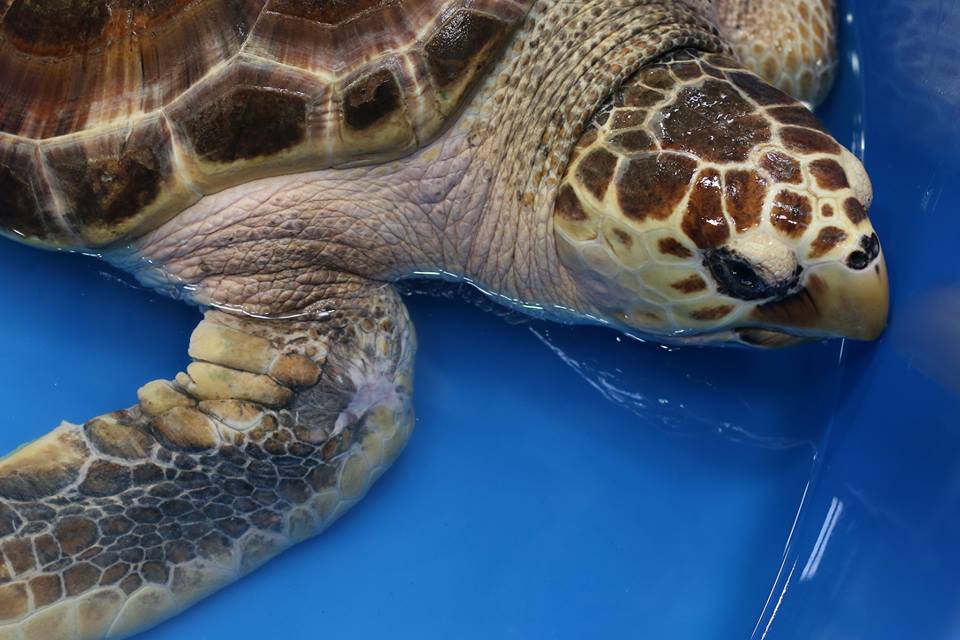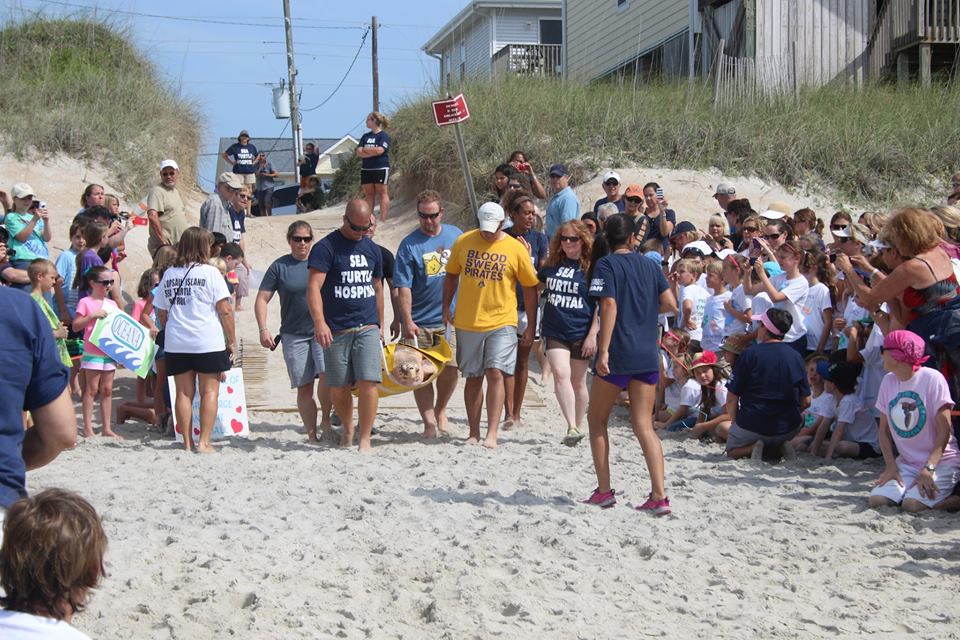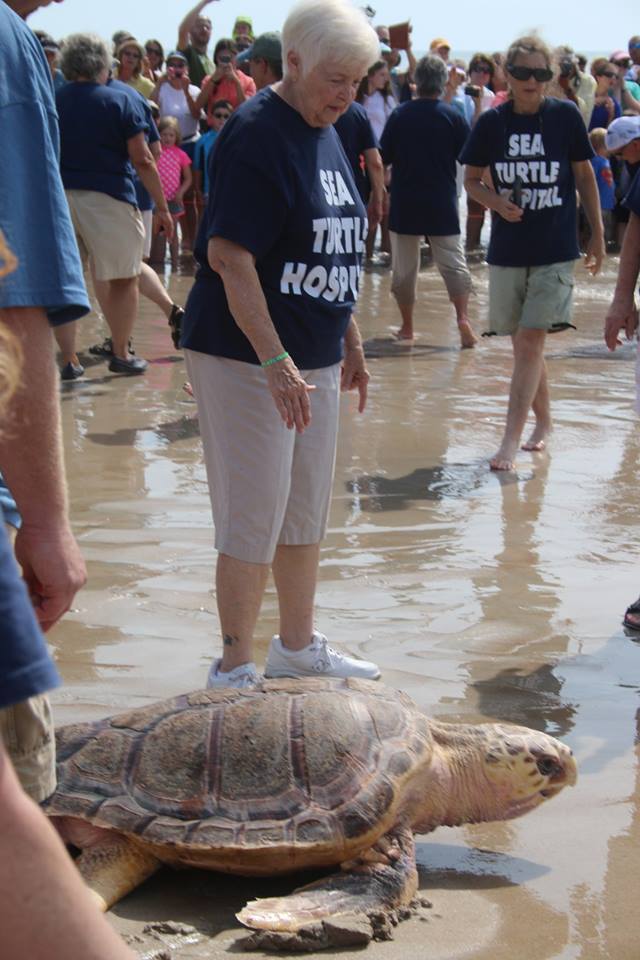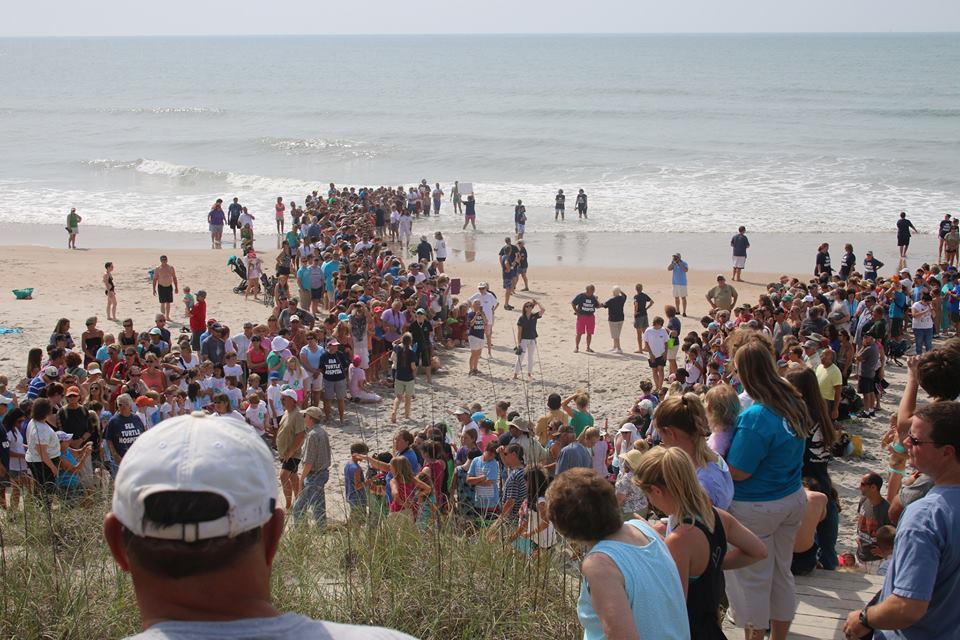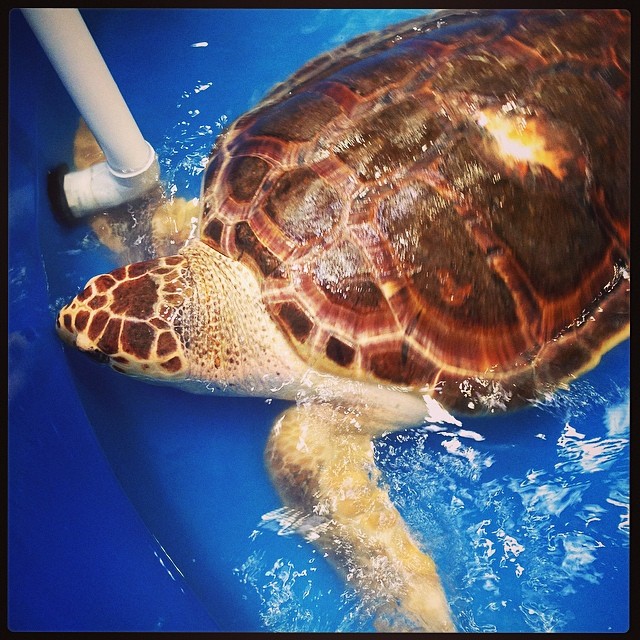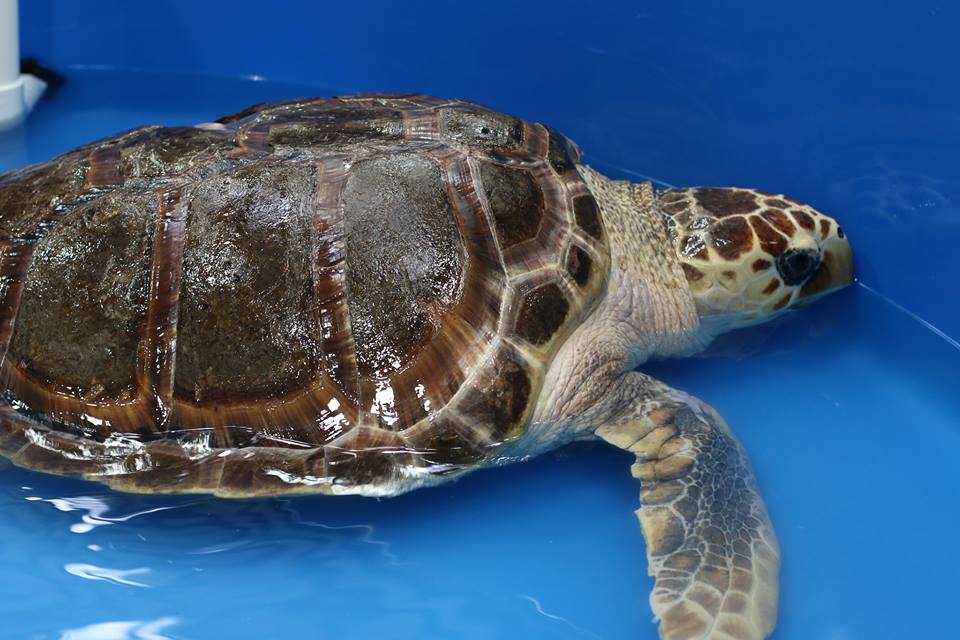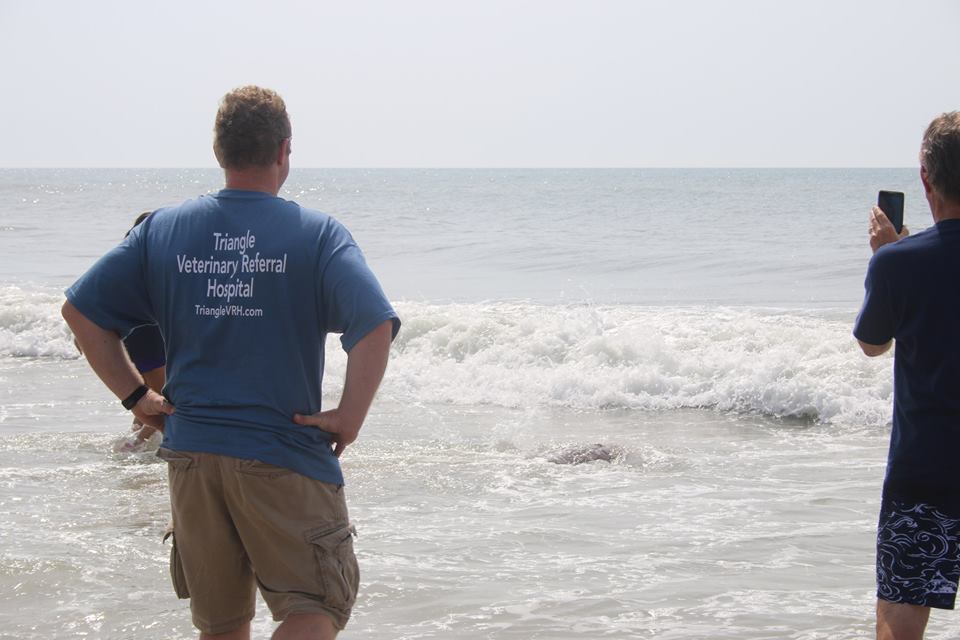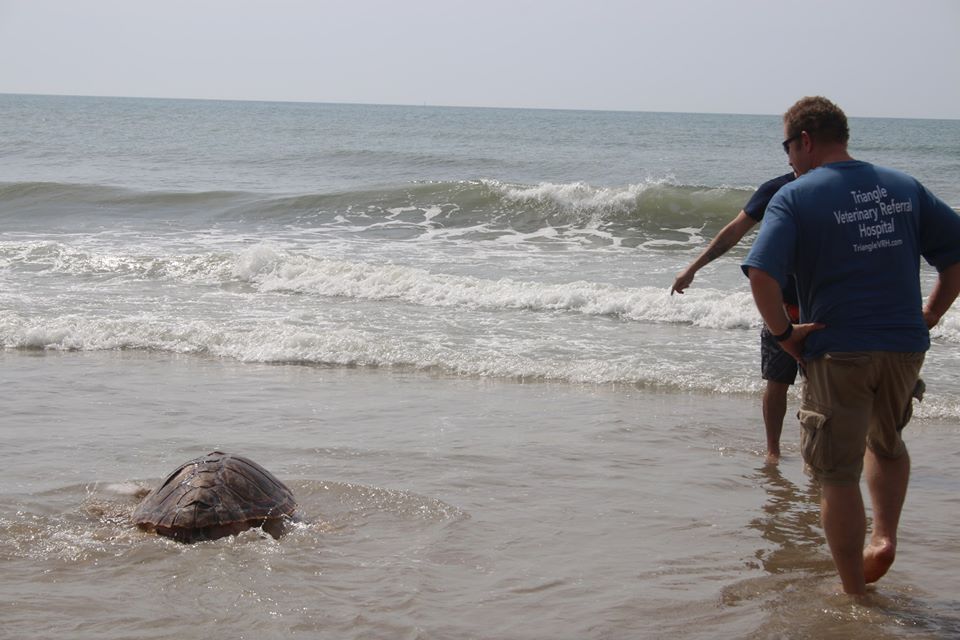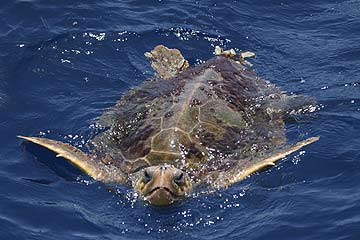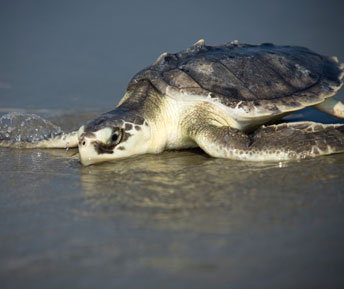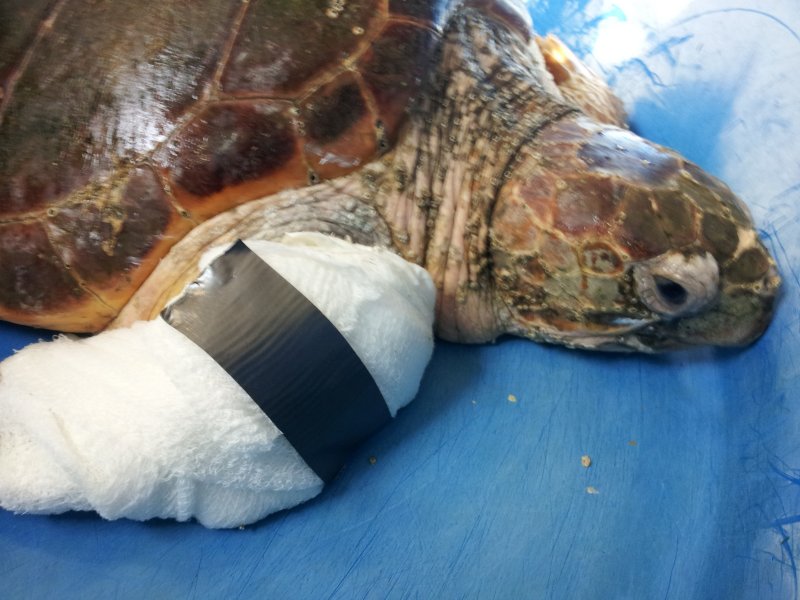Loggerhead sea turtles are the most prevalent species in NC waters and they are the most common species treated at the Karen Beasley Sea Turtle Rescue and Rehabilitation Center. While all other species of sea turtles found near the U.S. coastline are listed as endangered, the loggerhead is classified as threatened. Adult loggerheads weigh up to 350 pounds when fully grown, with a carapace length of ~32 to 41 inches long (82-105cm).
Sea turtles spend the majority of their life in the ocean, and only come ashore when they are nesting or sick/injured. They are often injured by boaters, because sea turtles must surface to breathe. In NC, boating injuries seem to be most prevalent in the late spring to early fall. Female turtles migrate closer to shore to nest during this time. Boating accidents frequently result in severe carapace or plastron fractures, flipper lacerations, head trauma, etc. Turtles also frequently become entangled in fishing line, crab traps, rope and fishing nets, which can result in severe lacerations or even amputations of flippers.
Complete or partial flipper amputations were the most common forms of treatment for severe flipper lacerations in the past. If the amputee is a male sea turtle, the prognosis for losing a rear flipper is better than losing a front flipper since they hold onto females during breeding. On the contrary, females are better off losing a front flipper since the rear flippers are essential for digging nests in the sand. Female turtles can not dig a hole of appropriate depth with only one hind flipper. It has been shown that navigation and swimming is not affected by the loss of one flipper.
I have been involved in multiple surgical sea turtle procedures for KBSTRRC. Shell or carapace fractures are treated by stabilizing the shell with stainless steel plates and screws. Many times the broken shell becomes nonviable or necrotic and is debrided along with dead soft tissue. Overtime the healing new shell and soft tissue fill-in the space. Head injuries are also addressed by repairing associated soft tissue or applying bone plates to the skull. I have also repaired or salvaged severe lacerations in these turtles instead of complete or partial amputations. Primary repair of a severe flipper laceration gives the turtle the best chance of success once released in the wild to nest or breed. It is probable the same turtle could have another injury to a flipper over time.
I have reconstructed two flippers in Sea turtles in the past. I repaired a near full thickness back flipper laceration on a Loggerhead turtle (Bunswick II) who was completely rehabilitated. He was released approximately 1 year post-injury with nearly normal flipper function. A partial amputation was performed on a Kemps Ridley sea turtle (Briggy) because the end of the flipper could be preserved. However I used some of the viable skin to create a skin flap to reconstruct the remaining flipper. He was rehabilitated and released nearly a year later as well. Both cases were reported in the Journal of Zoo and Wildlife Medicine in 2009. The journal discusses each case in more detail, and is listed below.
I recently repaired Nichols flipper laceration in the same manner as Brunswick II. His bones were pulled together with suture (Toggled) and then the soft tissue was repaired. My counterpart in surgery Dr. Roe debrided and cleaned his Carapace injury. The carapace wound will be allowed to heal by second intention (allow his body to repair the wound over time). Last report is he has been doing well. However, some of the sutures have loosened which toggled his bones back together. I suspect it will continue to stabilize with scar tissue over time, and hopefully he will be released as well.



